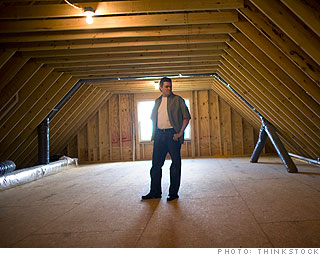4 ways to cut winter energy bills
These four home products can let you burn less cash when temperatures crash.

Annual energy savings: $660
Pays for itself within: 5 years*
Forget the itchy pink stuff. Newer insulation materials are more energy-efficient, not to mention friendlier to your health and the environment.
They include spray foam, such as Icynene, and cellulose, such as GreenFiber, which is made from bits of recycled paper. Adding such insulation to your attic and using caulk or foam to seal cracks that let cold air in can save you up to 30% on energy costs, according to the U.S. Department of Energy. (Be sure not to skip the air-sealing step: Insulation alone won't cut it.)
You'll pay $3,000 to $6,000 for a pro to do the job ($1,000 to $2,000 to DIY if you're extremely handy). But if you complete it by Dec. 31, you'll qualify for a federal tax credit of 30% of the amount you spent, up to $1,500. That, plus the savings you'll reap for years to come, should take some of the sting out.
*Factors in a a $1,350 tax credit.
More galleries

